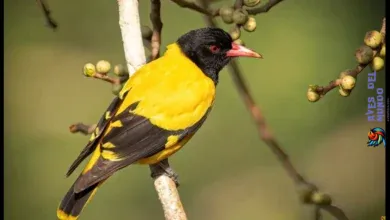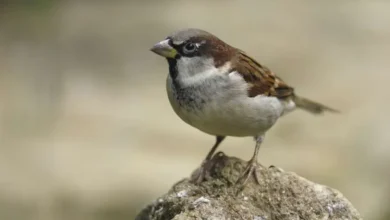Have you ever wondered how tropical birds obtain their dazzling array of colors? Is it purely for beauty or is there a deeper purpose behind their vibrant plumage? Explore the captivating world of aves tropicales, including the mesmerizing loros coloridos and other especies de aves exóticas, as we delve into their unique characteristics, migration patterns, and the efforts being made to conserve these extraordinary creatures.
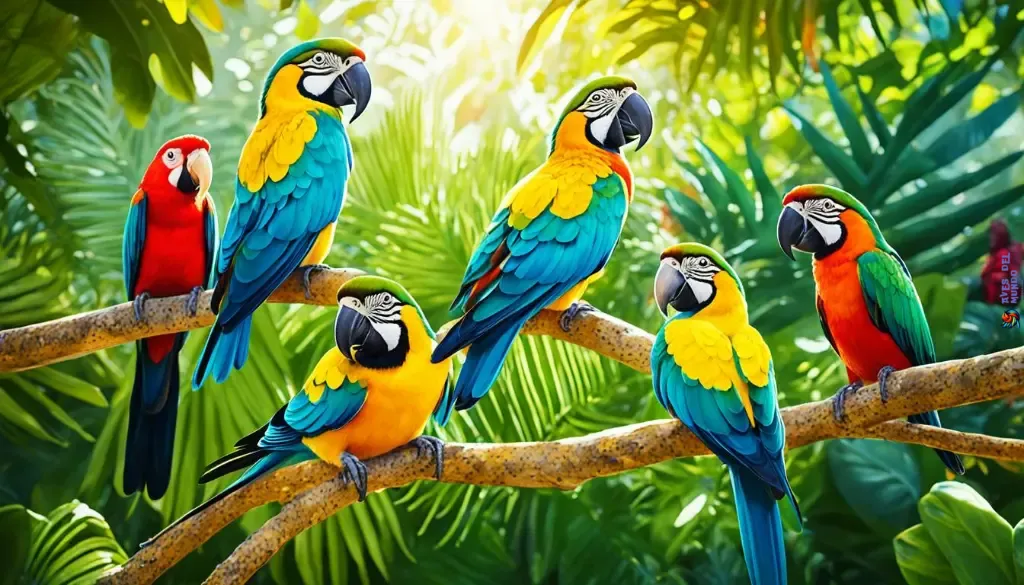
Join us on this journey as we uncover the secrets of ornitología, the study of tropical birds, and the fascinating insights it has provided. Learn about the dedicated entusiastas de las aves who indulge in the joys of exotic bird watching, witnessing the wonders of these creatures in their natural habitats. Understand the critical role of conservación de aves in protecting the diverse ecosystems that sustain these rare and elusive species.
But what about their migration patterns? How do these tropical birds navigate vast distances and overcome incredible obstacles? Discover the science behind their long-distance flights and the factors that influence their patrones de migración de aves.
Join us in unraveling the mysteries of these extraordinary creatures, their habitats, and the conservation efforts aimed at protecting them. Prepare to be enchanted by their beauty, inspired by their resilience, and motivated to contribute to their survival.
Tropical Birds: A Dazzling Array of Colors
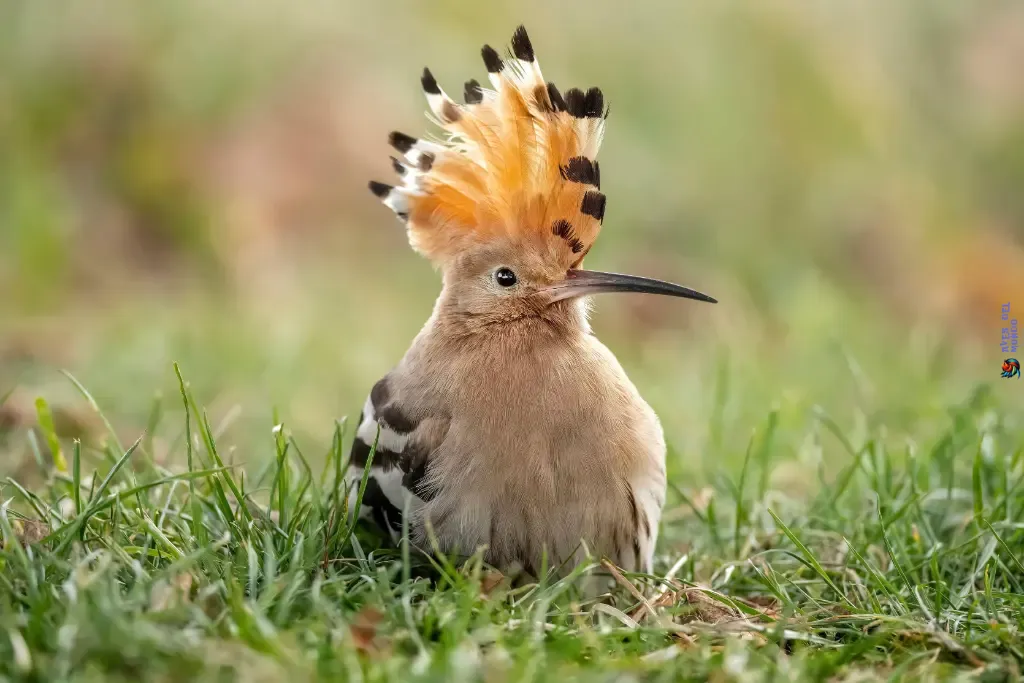


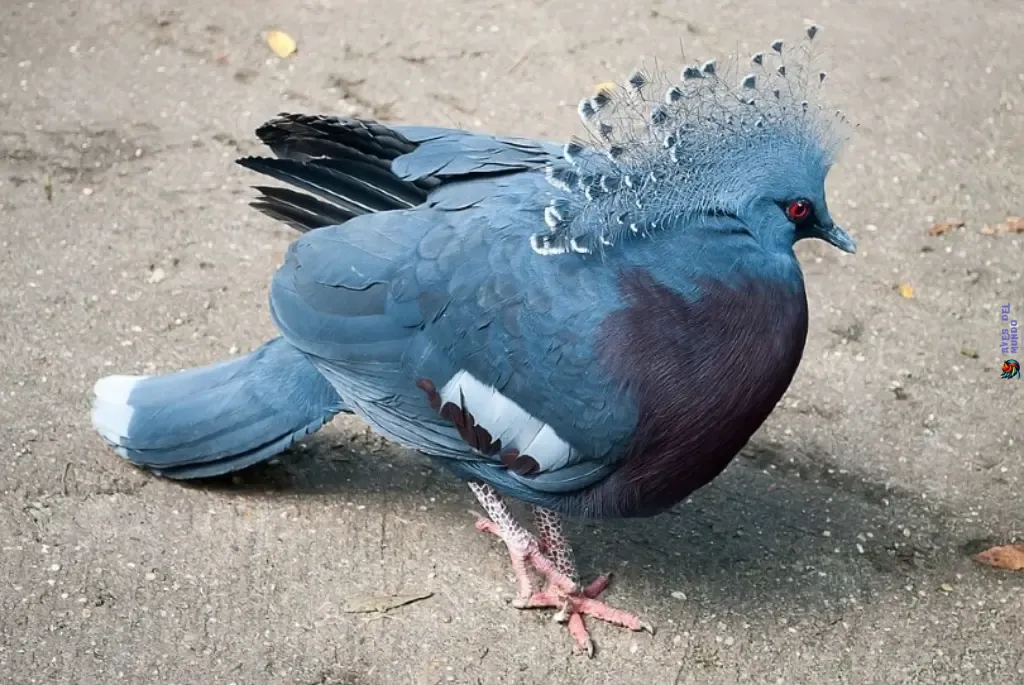
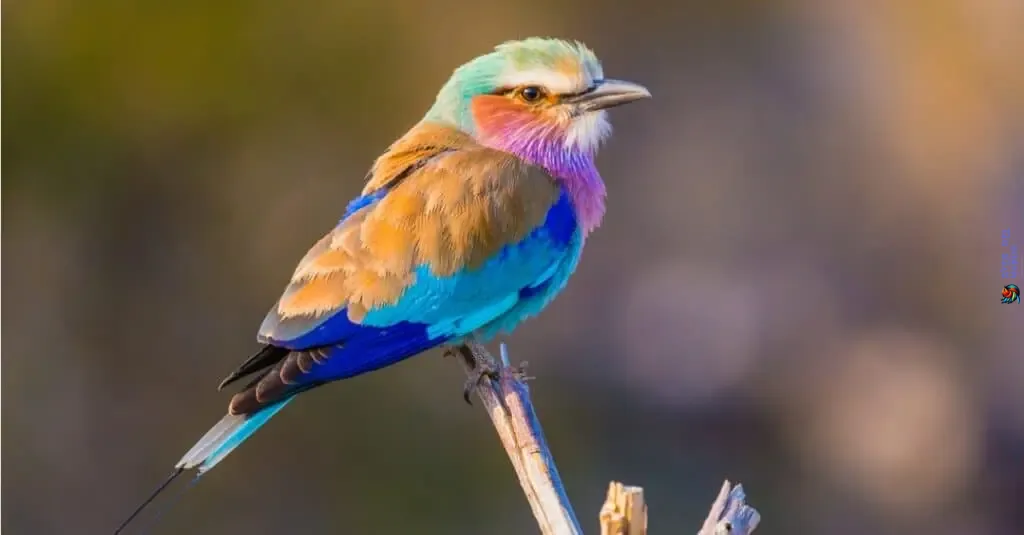
Immerse yourself in the vibrant world of tropical birds and their stunning colors. These magnificent avian creatures, such as the exotic species like loros coloridos, captivate with their brilliant plumage. Each tropical bird species reveals a unique combination of colors, patterns, and shades, creating a spectacle of natural beauty.
From the vibrant reds and blues of the Scarlet Macaw to the enchanting shades of green found in the Amazonian Parrot, the tropical bird kingdom is a visual wonderland. These birds use their vibrant plumage not only for attracting mates but also for camouflage and self-defense against predators.
In tropical rainforests and other lush environments, the variety of species and their coloration is astounding. Whether it’s the flamboyant feathers of the Hyacinth Macaw or the iridescent hues of the hummingbird, tropical birds display an incredible palette of colors that dazzle the eyes and inspire awe.
Let’s explore the diverse and mesmerizing colors of tropical birds through stunning images:
The Colorful Spectrum of Tropical Birds
Tropical birds showcase an extensive range of colors, from subtle pastels to vibrant jewel tones. Here are a few examples:
- The Toco Toucan, with its iconic large beak, flaunts bold hues of black, white, and bright orange.
- The majestic Blue-and-Yellow Macaw stuns with its deep blue body, golden yellow breast, and vibrant green wings.
- The resplendent Quetzal, a symbol of Guatemala’s natural heritage, boasts a shimmering emerald green plumage paired with a striking red breast.
These are just a glimpse of the kaleidoscope of colors found in the tropical bird kingdom. Each species has its unique combination of colors, designed to help them thrive in their specific habitats and catch the attention of potential mates.
«The colors of a tropical bird are nature’s way of expressing its creativity and beauty. They are a testament to the wonders of evolution and the interplay between form and function.» – Renowned ornithologist Dr. Maria Gonzalez
Appreciating the remarkable colors of tropical birds goes beyond aesthetics. It offers valuable insights into their behavior, ecology, and evolutionary adaptations. Understanding the coloration of these avian wonders allows us to unravel the intricate tapestry of life in tropical habitats.
The Study of Tropical Birds: Ornithology
Delve into the fascinating field of ornithology, the scientific study of birds. Through years of research and dedicated scientific inquiry, ornithologists have unraveled the secrets of tropical birds, shedding light on their behaviors, ecology, and evolutionary adaptations.
Ornithology provides a scientific framework to understand the complexities of tropical bird species, their habitats, and their interactions with the environment. This field of study encompasses various disciplines, including biology, ecology, genetics, and behavior, to gain comprehensive insights into avian life.
By studying tropical birds through the lens of ornithology, scientists have made remarkable discoveries regarding their unique characteristics, migratory patterns, and role in maintaining ecosystem balance. This knowledge is crucial for effective conservation strategies to protect these diverse and fragile avian populations.
The Methods and Tools of Ornithology
To better comprehend tropical birds, ornithologists employ a range of methods and tools to collect data and analyze their findings. These techniques allow researchers to observe birds in their natural habitats and reveal hidden aspects of their biology.
Ornithologists often use advanced technologies such as tracking devices, binoculars, and GPS systems to monitor bird behavior, record their movements, and gain a deeper understanding of their habitats. By combining these tools with meticulous observation and data analysis, scientists can determine critical information such as migration routes, breeding patterns, and feeding habits.
«Ornithology enables us to unravel the mysteries of tropical birds and uncover the intricate web of connections they have with their environment.» – Dr. Maria Rodríguez, leading ornithologist
This holistic approach, combined with establishing conservation areas and engaging local communities, plays a vital role in safeguarding tropical bird species and their habitats. Ornithology continues to evolve, contributing to our understanding of these magnificent creatures and enabling us to take proactive measures for their long-term preservation.
Throughout history, studies in ornithology have transformed our perception of birds and deepened our appreciation for their invaluable contributions to the natural world. From their mesmerizing display of colors to their elaborate vocalizations, tropical birds are a testament to the wonders of nature.
As we continue to explore the captivating field of ornithology, we unlock doors to further scientific advancements and gain profound insights into the delicate balance of our planet’s ecosystems. Through continued research, education, and conservation efforts, we can safeguard the future of these remarkable tropical bird species for generations to come.
| Ornithology Methods | Benefits |
|---|---|
| Field Observation | Allows researchers to study birds in their natural habitats and observe their behaviors firsthand. |
| Tracking Devices | Aids in understanding migration patterns, breeding grounds, and individual bird movements. |
| Genetic Analysis | Reveals evolutionary relationships and genetic diversity within avian populations. |
| Remote Sensing | Assists in mapping habitats and monitoring ecosystem changes over time. |
| Acoustic Monitoring | Enables the study of avian vocalizations, communication, and territorial behavior. |
Enthusiasts’ Delight: Exotic Bird Watching
Immerse yourself in the enchanting world of tropical birds by joining the passionate entusiastas de las aves. These dedicated individuals spend hours observing and documenting the behavior of these magnificent creatures in their natural habitats. Bird watching is a rewarding hobby that offers a unique opportunity to connect with nature and appreciate the wonders of avian life.
When it comes to bird watching in tropical habitats, it’s essential to know the best locations and habitats for spotting a diverse range of avian species. From lush rainforests to coastal wetlands, there are countless ecosystems teeming with avian biodiversity.
Some renowned habitats for tropical bird watching include:
- The Amazon Rainforest: Explore the world’s largest rainforest and encounter a vast array of exotic tropical birds, including macaws, toucans, and parrots.
- The Pantanal Wetlands: Marvel at the incredible diversity of birdlife in this expansive wetland, home to species like the jabiru stork, kingfishers, and herons.
- The Osa Peninsula in Costa Rica: Discover a haven for bird enthusiasts with its rich biodiversity, housing species such as scarlet macaws, toucans, and hummingbirds.
- The Great Barrier Reef: Combine bird watching with stunning coastal scenery as you observe seabirds like pelicans, terns, and frigatebirds soaring above the crystal-clear waters.
Whether you are a seasoned bird watcher or a novice enthusiast, immersing yourself in the serenity of tropical habitats and watching these incredible creatures in their natural environment is an awe-inspiring experience.
So grab your binoculars, pack your camera, and embark on an unforgettable journey into the world of tropical birds. Become an entusiastas de las aves and feel the excitement of connecting with nature’s feathered wonders.
Now, feast your eyes on this stunning image of a parrot in flight:
| Habitat | Main Bird Species |
|---|---|
| Amazon Rainforest | Macaws, Toucans, Parrots |
| Pantanal Wetlands | Jabiru Stork, Kingfishers, Herons |
| Osa Peninsula | Scarlet Macaws, Toucans, Hummingbirds |
| Great Barrier Reef | Pelicans, Terns, Frigatebirds |
Conservation Efforts: Protecting Tropical Avifauna
When it comes to the preservation of tropical avifauna, conservation efforts play a crucial role in safeguarding vulnerable species and their habitats. By understanding the importance of conservación de aves, we can ensure the survival of these remarkable creatures for future generations.
Initiatives and organizations around the world are dedicated to protecting tropical birds and their ecosystems. From the Amazon rainforest to the Caribbean islands, these conservation efforts focus on various aspects of avian conservation, including habitat preservation, species monitoring, and community involvement.
«Conservation is a race against time. Every effort counts in protecting the future of our tropical birds.»
Organizations like the Tropical Bird Conservation Society (TBCS) work tirelessly to raise awareness about the threats faced by tropical avifauna. Through education and research programs, they strive to promote a deeper understanding of these unique species and the importance of their conservation.
The TBCS also collaborates with local communities to implement sustainable practices that benefit both the birds and local livelihoods. By engaging the community in conservation efforts, they ensure a holistic approach to preserving the tropical avifauna.
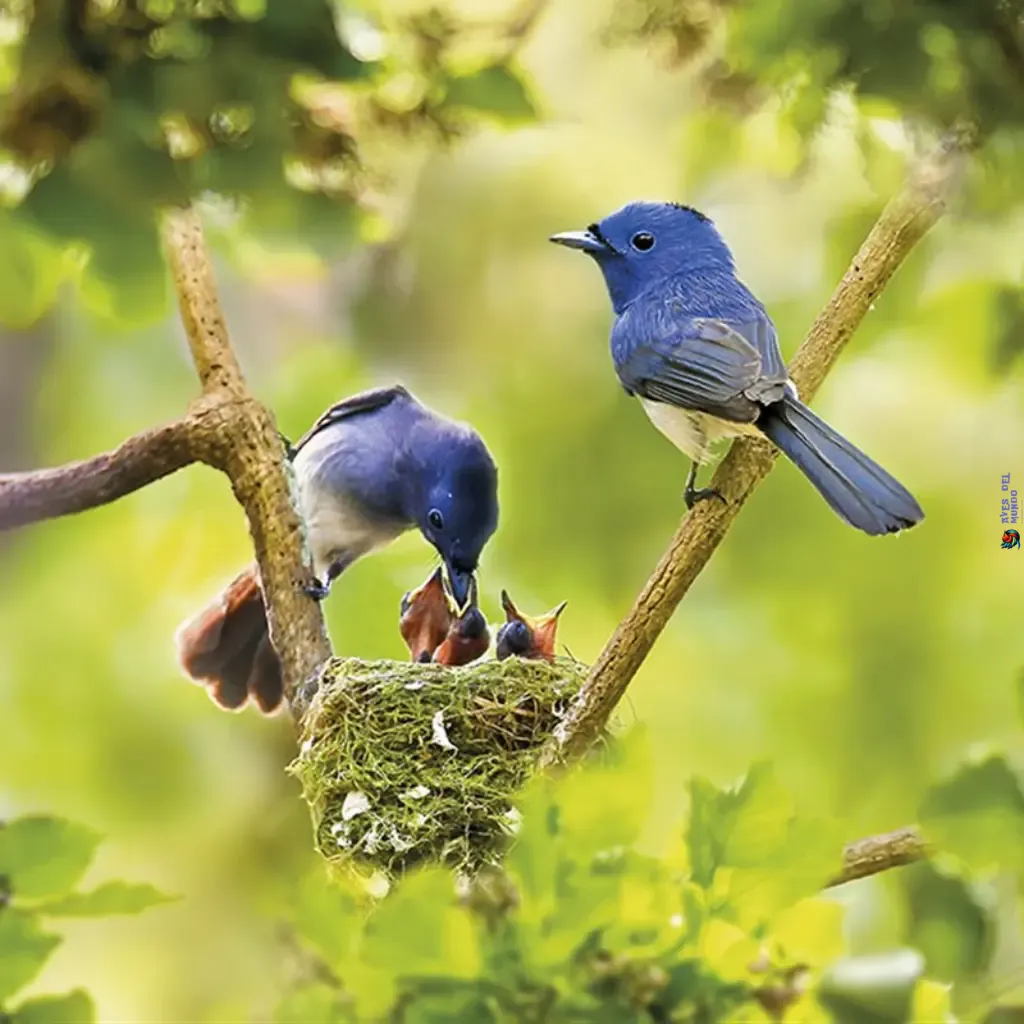
As individuals, we can also contribute to the conservation of tropical avifauna in meaningful ways. Here are some simple steps you can take:
- Support conservation organizations: Donate to reputable organizations that focus on avian conservation and habitat protection.
- Create bird-friendly habitats: Plant native trees and shrubs that provide food and shelter for tropical birds in your own backyard.
- Reduce pesticide use: Pesticides can have detrimental impacts on bird populations. Opt for natural pest control methods whenever possible.
- Participate in citizen science projects: Help monitor bird populations and contribute valuable data to ongoing research efforts by participating in citizen science initiatives.
- Spread the word: Share your knowledge about tropical avifauna and the importance of conservation with friends, family, and your community.
Remember, conservación de aves is a collective effort, and every action counts. Together, we can make a positive impact on the future of tropical birds and ensure their continued presence in our world.
Migration Patterns: Following the Footsteps of Tropical Birds
Embark on a fascinating journey as we unravel the mysteries behind the migration patterns of tropical birds. These avian adventurers navigate vast distances across continents, showcasing their remarkable ability to traverse the skies.
Migration is a natural phenomenon that allows tropical birds to find favorable breeding grounds, access abundant food sources, and escape harsh environmental conditions. The long-distance flights undertaken by these birds are a testament to their incredible endurance and adaptability.
The Factors Influencing Migration
Several factors influence the migration patterns of tropical birds:
- Seasonal Changes: As seasons change, tropical birds instinctively sense the shifting weather patterns and adjust their migration routes accordingly. They time their journeys to coincide with the availability of food and optimal breeding conditions.
- Food Availability: One of the primary motivations for migration is the search for food. Tropical birds follow the abundant sources of insects, fruits, nectar, and other resources essential for their survival.
- Habitat Alterations: Changes in habitat due to human activities, such as deforestation or urbanization, can force tropical birds to alter their migration routes to find suitable habitats or nesting sites.
- Instinctual Navigation: Scientists believe that tropical birds possess an innate ability to detect magnetic fields, celestial cues, and landmarks, which aid them in navigating their way across vast distances.
Adaptations for Long-Distance Flights
Tropical birds have developed remarkable adaptations to perform their long-distance flights:
- Aerodynamic Bodies: These birds possess streamlined bodies with tapered wings, enabling efficient flight over long periods. Their aerodynamic design reduces air resistance and conserves energy.
- Enhanced Respiratory Systems: Tropical birds have highly efficient respiratory systems that allow them to extract oxygen from thin air at high altitudes, enabling them to fly at great heights during migration.
- Energy Conservation: To conserve energy during long flights, birds often fly in a «V» formation, benefiting from the air currents generated by the bird in front of them. This enables them to fly longer distances with less energy expenditure.
- TimeZone Clocks: Many tropical birds possess an internal biological clock that helps them track the changing amount of daylight, allowing them to time their flights accurately and choose the optimal time to migrate.
To visualize the intricate paths and distances covered by migrating tropical birds, take a look at the mesmerizing migration map below:
As you can see from the migration map, tropical birds embark on epic journeys, constantly adapting to the challenges they encounter along the way. Their migrations not only showcase their incredible physical capabilities but also serve vital ecological functions by facilitating the dispersal of seeds and contributing to biodiversity.
«The more we uncover about the migration patterns of tropical birds, the greater our understanding of the interconnectedness of ecosystems and the importance of preserving their habitats.»
In the next section, we will explore the world of rare and elusive exotic tropical bird species, offering a glimpse into their unique characteristics and behavior.
Rare and Elusive: Exotic Tropical Bird Species
Embark on an extraordinary journey through the realm of rare and elusive exotic tropical bird species. These avian creatures possess unique characteristics and captivating behaviors that inspire awe and fascination. Let’s dive into their world and explore the wonders of their habitats.
One such remarkable species is the Red-tailed Black Cockatoo (Calyptorhynchus banksii), known for its striking appearance and distinct red tail feathers. This majestic bird can be found in the tropical rainforests of Australia, where it perches gracefully among the lush foliage.
Another extraordinary avian species is the Wilson’s Bird of Paradise (Cicinnurus respublica). This stunning bird, native to the tropical rainforests of Papua New Guinea, is adorned with vibrant colors and intricate plumage. Its elaborate courtship dance is a spectacle to behold, mesmerizing observers with its grace and beauty.
These rare and elusive species face numerous challenges for survival in their natural habitats. Deforestation, poaching, and illegal wildlife trade pose significant threats to their populations. Conservation efforts are crucial to protect these enchanting creatures and ensure their continued existence.
Explore the table below for a glimpse into the characteristics of some rare and elusive exotic tropical bird species:
| Species | Habitat | Features | Status |
|---|---|---|---|
| Red-tailed Black Cockatoo | Tropical rainforests of Australia | Distinct red tail feathers | Near Threatened |
| Wilson’s Bird of Paradise | Tropical rainforests of Papua New Guinea | Vibrant colors and intricate plumage | Endangered |
As you can see, these exotic tropical bird species are not only visually stunning but also face conservation challenges. By raising awareness and supporting conservation initiatives, we can contribute to the protection of these incredible creatures and preserve the beauty of our natural world.


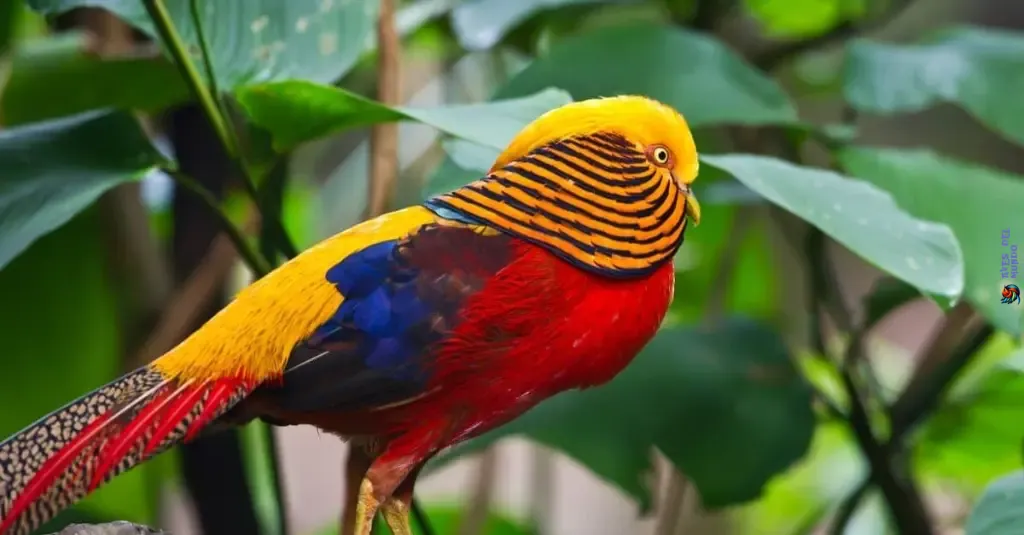


Protecting Paradise: Conservation of Tropical Bird Habitats
Preserving the diverse habitats of tropical birds is crucial for the survival of these magnificent creatures. The conservation of aves tropicales and their habitats plays a vital role in maintaining the delicate balance of ecosystems and ensuring the future generations can continue to marvel at their beauty.
Tropical bird habitats face numerous threats that endanger the species that call them home. Deforestation, habitat degradation, and climate change pose significant challenges to the survival of these avian populations. Without immediate action, their existence could be at risk.
«The preservation of these enchanting habitats is essential to protect not only the birds but also the intricate web of life they support.»
Efforts are being made by governments, NGOs, and local communities to safeguard these crucial habitats. Conservation projects focus on reforestation, land management, and the creation of protected areas to ensure the habitats are preserved for generations to come.
To understand the impact of conservation efforts, consider the following table:
| Conservation Initiative | Impact |
|---|---|
| Creation of protected areas | Preserves biodiversity, provides safe nesting grounds |
| Reforestation projects | Restores habitat, increases food availability |
| Sustainable land management | Maintains ecosystem balance, reduces habitat destruction |
It is essential for everyone to contribute to the preservation of tropical bird habitats. By supporting sustainable tourism, reducing carbon footprint, and raising awareness about the value of these ecosystems, we can play a crucial role in conserving aves tropicales and their habitats.
Together, we can protect paradise and ensure that the vibrant tropical bird populations continue to thrive in their natural habitats.
Unveiling the Beauty: Photographing Tropical Birds
Capture the breathtaking beauty of aves tropicales through the art of photography. With their vibrant colors and intricate details, these magnificent creatures like loros coloridos are a photographer’s dream. To truly unveil their hidden gems, it’s important to master the right techniques and approach.
Start by understanding the behavior and habitats of these tropical birds. Research their feeding patterns, roosting locations, and migration routes. This knowledge will help you anticipate their movements and capture them in their natural environment.
When photographing aves tropicales, pay special attention to lighting. Take advantage of the soft, golden light during the early morning or late afternoon to create stunning images. Experiment with different angles and compositions to highlight their vibrant plumage and unique features.
Patience is key when it comes to photographing these exotic avian creatures. Spend time observing their behavior and waiting for the perfect moment. Be respectful of their space and ensure that your presence doesn’t disturb their natural habitat.
So grab your camera and embark on a journey to capture the mesmerizing beauty of tropical birds. Capture the vivid colors, intricate details, and unique personalities of aves tropicales like loros coloridos. Through your lens, you have the power to showcase and preserve the captivating allure of these exotic avian wonders.


